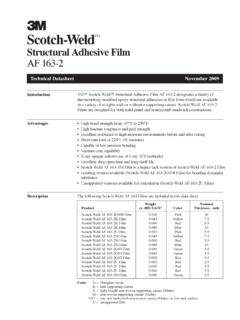Transcription of Prediction of Resistance and Propulsion Power of Ships
1 Prediction of Resistance and Propulsion Power of Ships Technical University of Denmark Hans Otto Kristensen University of Southern Denmark Marie L tzen Project no. 2010-56, Emissionsbeslutningsst ttesystem Work Package 2, Report no. 04 May 2013 1 2 Contents Introduction .. 3 Main Dimensions and other Definitions .. 3 Fixed values .. 3 Values assumed or calculated based on empirical methods/data .. 3 Variables .. 4 Total Resistance Coefficient .. 4 Wetted Surface .. 4 Frictional Resistance Coefficient .. 5 Incremental Resistance Coefficient .. 5 Air Resistance Coefficient .. 6 Steering 7 Residual Resistance Coefficient Harvald (1983)..7 Bulbous Bow Correction for Bulk Carriers and Bulbous Bow Correction for Container Total Ship Effective Power .. 10 Service allowance .. 11 Propulsive Efficiencies .. 11 Propulsion Power , PP .. 16 3 Resistance and Propulsion Power Full-scale Prediction Introduction To calculate the Propulsion Power for a ship, the Resistance and the total propulsive efficiency have to be determined with the highest possible accuracy.
2 As empirical methods are normally used for these calculations, it is worthwhile at least to know the accuracy of the different elements in the calculation procedures such that the propulsive Power can be predicted in combination with an estimate of the uncertainty of the result. In the following the calculation procedures used for the present project will be described in detail Main Dimensions and other Definitions Following parameters are used in calculation procedure of the ship Resistance RT: Lwl: The waterline length of the ship hull Lpp: Length between perpendiculars B: The waterline breadth of the hull T: The draught amidships : The displacement of the hull S: The wetted surface of the hull V: The sailing speed Fn: Froude number CB: Block coefficient CM: Midship section coefficient Cp: Prismatic coefficient M: Length displacement ratio or slenderness ratio : Mass density of water t: Water temperature Rn Reynolds number The kinematic viscosity of water Total Resistance coefficient Frictional Resistance coefficient Incremental Resistance coefficient Air Resistance coefficient Fixed values Design values: L, B, T, , V Calculated values (using design values).
3 CB, Cp, M, Fn, Rn Calculated values using approximations: S Environmental constants: Water density, temperature, kinematic viscosity Values assumed or calculated based on empirical methods/data Propeller diameter, Dprop Bulb Hull form Longitudinal center of buoyancy, LCB (change trim of vessel) 4 Variables Speed Vessel type Sailing condition: Displacement, draft and trim Total Resistance Coefficient The total Resistance coefficient, of a ship can be defined by: This is the originally ITTC1957 method from the International Towing Tank Committee (ITTC). All parameters in the above equation will be described in the present section. Wetted Surface The wetted surface is normally calculated by hydrostatic programs. However for a quick and fairly accurate estimation of the wetted surface many different methods and formulas exist based on only few ship main dimensions, as example Mumford s formula below: ( ) ( ) In the present project an analysis of the wetted surface data of 129 different newer Ships (of different type as well as size) shows that the wetted surface according to the above mentioned version of Mumford s formula can be up to 7 % too small or too large.
4 Therefore it has been analysed if the formula ( the constants in the formula) can be adjusted in order to increase the accuracy. The results of the analysis for the wetted surface for bulk carriers, tankers, container Ships , Ro-Ro twin screw Ships , Ro-Ro twin skeg Ships and double ended ferries can be seen in Appendix B. The equations for the wetted surface, which have been deducted from the present analysis, are shown in the table below: Bulk carriers and tankers ( ) Container vessels (single screw) ( ) Twin screw Ships (Ro-Ro Ships ) with open shaft lines (and twin rudders) ( ) Twin skeg Ships (Ro-Ro Ships with twin rudders) ( ) Double ended ferries ( ) 5 The formula for calculation of the wetted surface includes the area of rudder(s) skegs and shaft lines. However any additional surfaces, S', from appendages such as bilge keels, stabilizers etc.
5 Shall be taken into account by adding the area of these surfaces to the wetted surface of the main hull. If the wetted surface, S1, is given for a given draught, T1, the wetted surface, S2, for another draught, T2, can be calculated by using following formulas, which have been deducted based on an analysis of data for container Ships , tankers and bulk carriers: Container Ships : S2 = S1 - (T1 T2) (Lwl + B) Tankers and bulk carriers: S2 = S1 (T1 T2) (Lwl + B) Also based on a statistical analysis of container Ships , tankers and bulk carriers following relations between Lwl and Lpp have been found: Container Ships : Lwl = Lpp Tankers and bulk carriers: Lwl = Lpp Frictional Resistance Coefficient The frictional Resistance coefficient, , in accordance with the ITTC-57 formula is defined by: ( ) = where the frictional Resistance , , is sum of tangential stresses along the wetted surface in the direction of the motion.
6 Rn is the Reynolds number: is the kinematic viscosity of water: (( ) ( ) ) t is water temperature in degrees Celcius. As in the original Resistance calculation method by Harvald (called Ship Resistance ), it is here decided to leave out a form factor in the CF part, but include a correction for special hull forms having U or V shape in the fore or after body, as suggested by Harvald. The influence of a bulbous bow on the Resistance is included in a bulb correction, see section regarding this topic. Incremental Resistance Coefficient The frictional Resistance coefficient is related to the surface roughness of the hull. However the surface roughness of the model will be different from the roughness of the ship hull. Therefore, when extrapolating to ship size, an incremental Resistance coefficient CA is added in order to include the effect of the roughness of the surface of the ship.
7 This incremental Resistance coefficient for model-ship has very often been fixed at CA = However experience has 6 shown that CA decreases with increasing ship size and following roughness correction coefficient is proposed according to Harvald: = 1000t 103 CA = = 10000t 103 CA = = 100000t 103 CA = = 1000000t 103 CA = The CA values in the table can be estimated using the following expression by Harvald (1983): ( ) ( ( )) Using the above mentioned correction formula results in too low Resistance values for larger vessels (displacement more than 160000 t). Therefore following revised equation is used for calculation of CA: ( ( ) ( ( )) ) The minimum CA value of x 10-3 has been found by using the trial and error principle until reasonable correlations between empirical calculated Propulsion Power data and full scale Power values were obtained. Air Resistance Coefficient Air Resistance caused by the movement of the ship through the air, shall be included in the Resistance calculation procedure.
8 See Appendix A for analysis of this factor. Based on this analysis the following air Resistance coefficient; CAA values, are recommended. Tankers and Bulk Carriers CAA 1000 Small tankers Handysize tankers Handymax tankers Panamax tankers Aframax tankers Suezmax tankers VLCC Container Vessels CAA 1000 = but newer less than 7 Steering Resistance It is here decided not to include a correction for added steering Resistance . Residual Resistance Coefficient Harvald (1983) The residual Resistance coefficient, is defined as the total model Resistance coefficient minus the model friction Resistance coefficient, : The residual Resistance includes wave Resistance , the viscous pressure Resistance , and the additional Resistance due to the form or curvature of the hull. As the residual Resistance coefficient of the ship model is identical with the residual Resistance coefficient of the ship, CR is normally determined by model tests, where the Resistance in model scale is measured and converted to full scale values according to methods agreed upon by the International Towing Tank Committee (ITTC) as example by using the Resistance correction factors, CA and CAA as described earlier.
9 Alternatively the residuary Resistance can be predicted by empirical calculation methods, which are based on analysis of many model tests results. One of the most well known methods has been developed by Holtrop and Mennen [Holtrop and Mennen, 1978] from the model tank in Holland (MARIN). This method is very flexible but many details are needed as input for the calculation procedure, and the model is therefore not suitable when a quick calculation procedure is needed. In 1965 - 1974 Guldhammer and Harvald developed an empirical method ( Ship Resistance ) based on an extensive analysis of many published model tests. The method depends on relatively few parameters and is used for residual Resistance Prediction in the present analyses. Harvald presents curves (see Appendix H and I) for CR (CR,Diagram) as function of three parameters: 1) The length-displacement ratio, 2) the prismatic coefficient and finally 3) the Froude number.
10 The coefficient is given without correction for hull form, bulbous bow or position of LCB. Harvald gives additional correction for these parameters. The residual Resistance coefficient curves must be corrected for Position of LCB ( ) Shape / hull form ( ) B/T deviation from (CR curves are all given a breadth-draft ratio equal ) ( ) Bulbous bow shape and size ( ) A proposal for corrections for LCB not placed amidships in the vessel is given. Harvald allows only LCB forward of amidships and the correction will always be positive, which gives an increased Resistance . In the present analysis the LCB correction will be ignored 8 The correction for both the hull form and the B/T correction are used as described by Harvald. These factors are assumed not to have changed since the method was developed by Harvald; the correction must be the same disregarding age of vessel.







